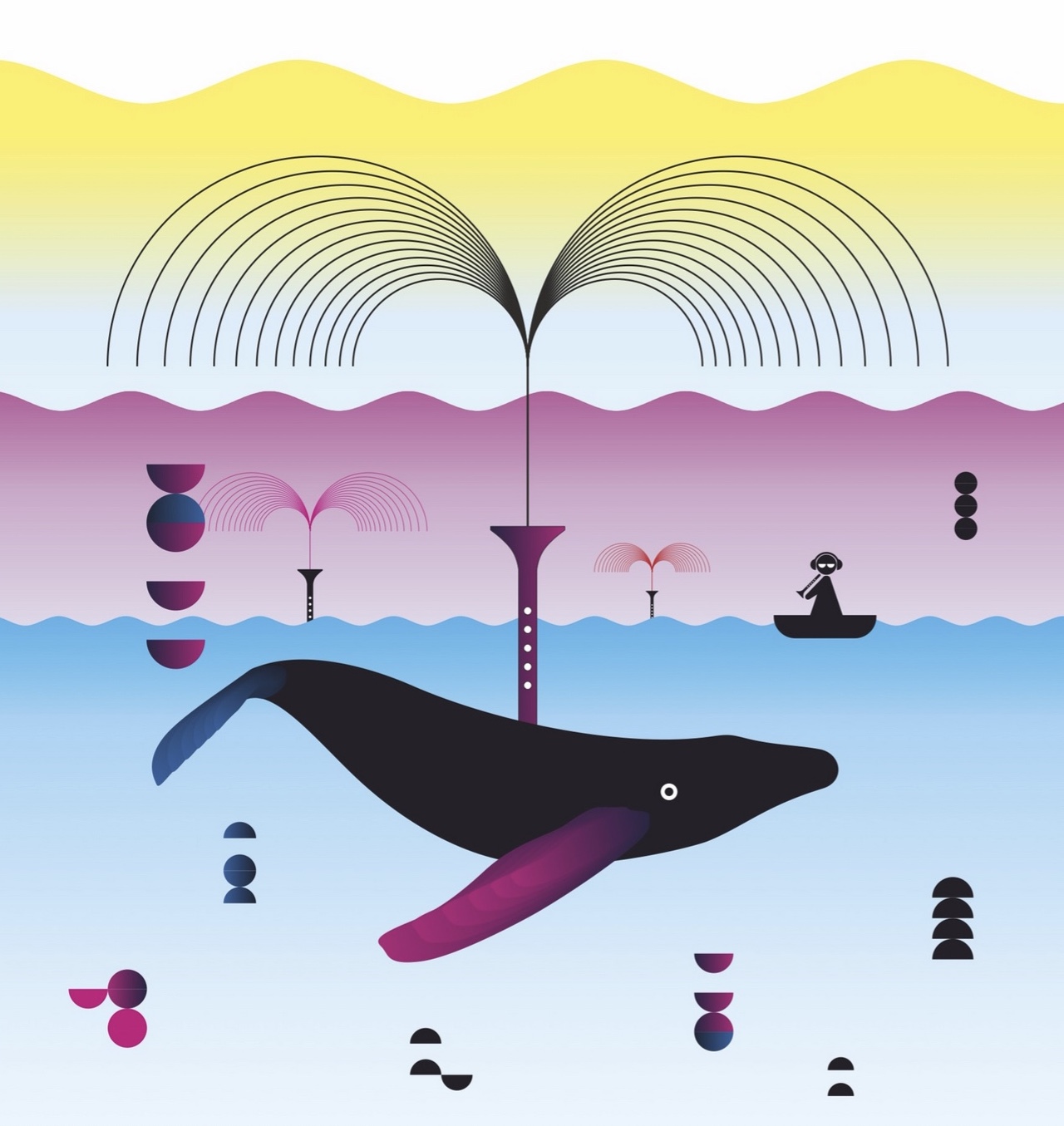Episode 23 – of Music and Beasts Part 1
Many scientists believe that species such as whales and birds make their sounds as a courtship display or to show other males they’re strong competitors. But is that really true, or if partly true the only reason? It seems so reductionist to propose reasons simply in terms of reproduction. When you get down to it, every species main genetically driven drive is to reproduce, even humans, after all let’s not forget that the term “Rock ’n Roll” is a euphemism for sex! But surely there is much more to all this than just genetic imperative? What about the appreciation of beauty? Even Darwin, the alpha male scientist of survival of “the fittest/strongest/loudest” fame indicated he believed animals could appreciate (& create beauty in songs) for beauties sake. David Rothenberg, in “Bug Music: How Insects Gave Us Rhythm and Noise” notes that in the vast repertoire of “the wildness of insect music” there are “tunes and tones we cannot quite place, of melodies and harmonies beyond tie scales and chords of human sense. It’s not Lydian, it’s not Dorian, whatever those ancient Greek modes were really sounding like we really don’t know, but any musician who has tried to jam along with insects knows we struggle to place the sounds we like together with this essential but alien noise. Throughout history, we humans have wanted to embrace these sounds as music, however they differ from our own rules and structures of melody. It is as if we have always intuitively known that the sonic declarations of animals make much more sense to us humans if we consider them to be music rather than language. Music is immediately meaningful even if we cannot translate it, so once heard as music, the world of animal communication is immediately accessible, emotional, and interesting” Ethnomusicologists have also recently called for the study of nonhuman animals and call into question the nature/culture binary and music’s position as a mediator across it, encouraging us to understand music- making as existing “within sonic ecosystems and across species-boundaries” Similarly, Marcello Sorce Keller (2012) has called on us to integrate ethnomusicology and zoomusicology because, he argues, we ourselves are animals and because knowledge of nonhuman animal sound behavior can help us better understand human musicality” We only just scratch the surface of this fascinating topic today, drawing form numerous sources. Episode Image: Cover Art from David Rothenberg’s “Whale Music: Thousand Mile Songs in a Sea of Sound” Here is a list of some (clickable links): Bug Music: How Insects Gave Us Rhythm and Noise Why Birds Sing: A Journey Into the Mystery of Bird Song Whale Music: Thousand Mile Songs in a Sea of Sound Humpback Whales Pass Their Songs Across Oceans
3:09 pm: Gisele She Walks, She Floats by Sooji from First Loves
3:09 pm: Magpie by Gentleforce from Life Anthems
3:09 pm: Cicada by Big Words
3:09 pm: El Grillo (The Cricket) by Cantus
3:09 pm: The Cricket by Mannheim Steamroller from Fresh Aire III
3:09 pm: The Sky by Mannheim Steamroller from Fresh Aire III
3:09 pm: Bee Sharp III by Sunwrae from Bee-Sharp Honeybee
3:09 pm: Spectral Canyon by Robert Rich from Whale Music (Remixed)
3:09 pm: Dolphin by Plastique
3:09 pm: The Worlds Last Whale by David Rothenberg (words Pete Seeger) from Whale Music
3:09 pm: Don’t Kill The Whale by Yes from Tormato
3:09 pm: Beluga No Tears by Gari Saarimaki, David Rothenberg from Whale Music (Remixed)
3:09 pm: Fly, Sing, Dream by Stephen Nachmanovitch, David Rothenberg from From This World, Another
3:09 pm: Ballad For A Blue Whale by Adrian Belew from Desire of the Rhino King
3:09 pm: Insect Drummers I: Inside the Mosquito’s Brain by David Rothenberg from Bug Music
3:09 pm: Another Song for the Whales (for Charlie Haden) by David Rothenberg from Homages (deluxe version)
